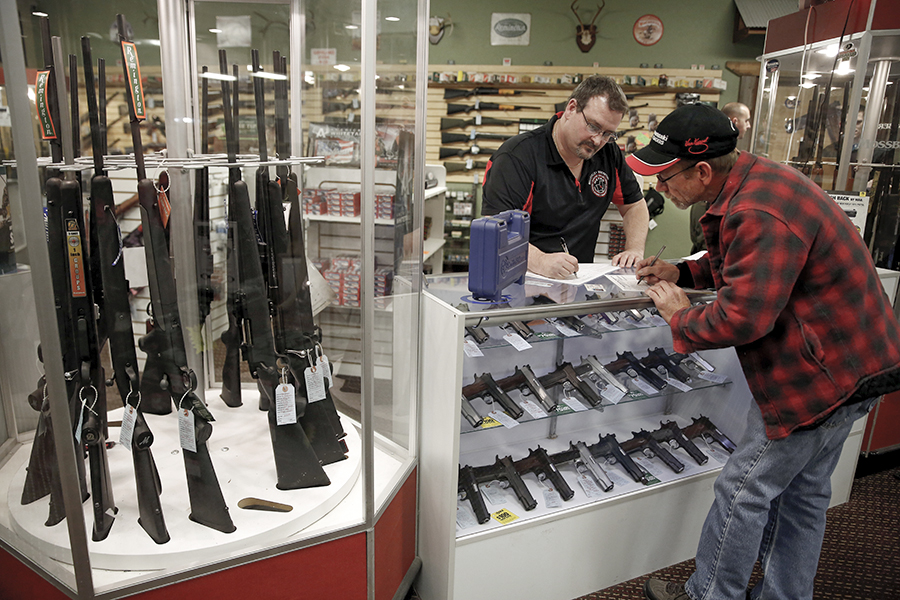
The uncertainty surrounding tariffs faded a bit Wednesday when President Trump announced a baseline tariff of 10% on all imports, with higher tariffs on certain countries.
Canada and Mexico were exempted from these new tariffs, meaning the 10% tariff on imports don’t apply to them under the new plan. That’s good news for companies that rely on aluminum and steel from Canada, the largest supplier of these metals to the U.S.
In the past Canada (as well as Mexico) had been subject to a 25% tariff on steel and a 10% tariff on aluminum imposed during the previous Trump Administration in 2018. Those tariffs were subsequently lifted in 2019 following the signing of the United States-Mexico-Canada Agreement.
Unfortunately for the European Union, a significant exporter of steel and aluminum to the U.S., the 20% tariff will notably impact their exports to the U.S. China, also a major exporter of aluminum and steel, faces a 32% tariff, while Japan will be hit with a 24% tariff, which will heavily affect trade between those countries and the U.S.
The tariffs imposed by Trump are being called “reciprocal tariffs,” targeting countries that have imposed tariffs on U.S. goods, and are part of the administration’s efforts to bring manufacturing jobs back to the U.S. as part of Trump’s “Make America Wealthy Again” initiative.
But it will take time for those jobs to return to the U.S., and in the meantime we’re likely to face retaliatory tariffs on U.S. exports. The increased prices on goods and materials from the Trump-imposed tariffs, coupled with an expected retaliatory battery from the affected countries, could further damage an already bruised economy reeling from high interest rates and Biden-era inflation.
So what does this mean for the firearms, ammunition, optics, and associated accessories and apparel makers? It’s not readily apparent that anything in the outdoor industry segments will be specifically exempted…yet. We’ll have to wait for the official tariff list to be released or for the U.S. International Trade Commission to shed light on that possibility, but for now we should assume, well, the worst.
Firearms
For firearms, we’ll see obvious price fluctuation assuming the exporting countries can’t reduce production costs and the importing entities pass along the tariff increases they can’t absorb.
The top firearms exporters to the U.S. and their associated new tariffs are: Germany, Italy, Austria, Czech Republic, Belgium, all part of the European Union, will see a 20% increase on goods. South Korea will face a 25% tariff, while Brazil and Turkey will each only have to take on a 10% tariff.
U.S.-based firearms manufacturers that rely on imported raw materials — mainly steel and aluminum — that aren’t imported from Canada or Mexico, will see production costs increase. Even more so if their assembled products include components from heavily tariffed nations.
Ammunition
The demand for ammunition over the last ten years and the impact that global conflicts have had on U.S. ammunition manufacturers has meant the volume of imported ammo has been significant. And with higher ammunition prices – and at times scarcity – where the ammo came from was less of a concern than stocking up at the best price available.
Trump’s new tariffs will hit the countries that export ammo to the U.S. The EU nations of Germany, Italy, and the Czech Republic each will see a 20% tariff. Ammo from South Korea (25%), Brazil (10%), Turkey (10%), and the United Kingdom (10%) could all see price increases here in the U.S.
One country not on Wednesday’s tariff list is Russia, meaning the steel-cased ammunition so many are fond of may not see any tariff-driven price increase, but sanctions put on the country after the invasion of Ukraine have meant virtually no Russian ammo has been coming into America for almost two years.
Due to the low military/defense ammunition stockpiles in various countries, it’s quite possible that the Trump administration removes any tariffs on small arms ammunition so countries can restock depleted reserves.
Soft Goods
With the leading soft goods exporters to the U.S. being China, Vietnam, Mexico, India, and Bangladesh, the resulting impact could be price increases to U.S. based importers of anywhere from 26% to 46%. Tariffs on these nations are: Vietnam 46%, Bangladesh 37%, China 32%, and India 26%. Mexico currently appears to be marked safe from additional tariffs.
Footwear
You’d probably be hard pressed to name many – if any – U.S. footwear makers. The new tariffs will hit footwear brands because the leading exporters to the U.S. are China (32%), Vietnam (46%), and Indonesia (32%).
Textiles
For the U.S.-based soft goods manufacturers, the cost of the materials used in the construction of their products will be impacted by the tariffs. Currently China (32%), India (26%), and South Korea (25%) are the major exporters of textile fabrics to the U.S.
Generally speaking the outlook is not great, especially in the down economy the Trump Administration inherited from Biden. Tom Hopper with NASGW sees the biggest concerns being with the overall market, discretionary spending, and customer confidence.
“There’s not a pretty picture for consumers right now. You can find virtually any firearm, ammo, or optic easily. It’s not an availability issue. Consumers are bracing for the unknown. Barring any social event, I think the market will continue to decrease until a clearer picture of the market unfolds. I don’t see anything positive in the near term.”
For firearms manufacturers, this overall softening market could result in a surge in the sale of used guns.
In speaking with Allen Forkner at GunBroker.com, he noted that, “We’re definitely seeing additional interest toward pre-owned firearms over the past few months. Part of that could be the economy driving people to look for deals, or an increase in products being listed as people need an extra dollar or two. But, based on timing it’s plausible that we may be seeing a segment looking to stay ahead of or avoid tariff’s.”
He also pointed out that it’s possible that tariff-driven price increases could have some impact on the aftermarket and custom markets as people buying cheap may be upgrading to mimic what they wanted to buy.
The current climate may best be described as…rough, but it’s not insurmountable. If we have learned anything from the years since Trump’s ascendency into politics, he’s nothing if nor resourceful when it comes to orchestrating turnarounds. He’s not likely to allow pain points that voters view as being of his making to last too long.
We’ll just have to wait and see how the tariffs play out.

